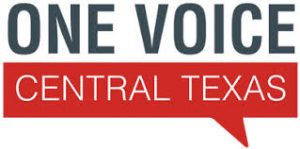Leveraging Coalitions’ Influence for Community-Wide Reframing
March 22, 2018In the last newsletter, we looked at individual human service organizations in Taking Practical Steps to Sustainable Implementation. Expanding on that theme, we consider how organizations can work in coalitions to institutionalize the Building Well-Being Narrative throughout their communities.
Modeling Reframing Throughout Community Coalitions
 Illinois Partners for Human Service, a coalition of over 800 organizations across the state, and a reframing pioneer, formed a Reframing Committee as one piece of its broader reframing strategy. The committee is comprised of human service leaders from several communities to accelerate the sector’s adoption of reframing. Together, they have mapped out a strategy for mobilization and implementation–while also reframing their own organizations’ communications–that includes:
Illinois Partners for Human Service, a coalition of over 800 organizations across the state, and a reframing pioneer, formed a Reframing Committee as one piece of its broader reframing strategy. The committee is comprised of human service leaders from several communities to accelerate the sector’s adoption of reframing. Together, they have mapped out a strategy for mobilization and implementation–while also reframing their own organizations’ communications–that includes:
- Organizing and leading workshops and presentations to engage partners in reframing,
- Communicating the building well-being narrative to policymakers and the public, as highlighted in this recent news article,
- Developing sample communications, such as talking points for their board of directors on human services priorities for an advocacy day at the state’s capitol, and
- Integrating reframing messages in public-facing communications, including the organization’s website (e.g., potential and well-being).
 One Voice Central Texas, a coalition of the leadership of over one hundred nonprofit health and human service organizations, established a Reframing Leadership Task Force of member human service leaders that is a model for embedding reframing in membership coalitions. As with Illinois Partners, One Voice Task Force members are leading efforts to reframe their individual organization’s communications, in addition to successful coalition-wide strategies such as:
One Voice Central Texas, a coalition of the leadership of over one hundred nonprofit health and human service organizations, established a Reframing Leadership Task Force of member human service leaders that is a model for embedding reframing in membership coalitions. As with Illinois Partners, One Voice Task Force members are leading efforts to reframe their individual organization’s communications, in addition to successful coalition-wide strategies such as:
- Convening monthly meetings for trainings and hands-on learning to identify reframing opportunities and address common implementation challenges,
- Conducting outreach and organizing reframing workshops and presentations to raise awareness among the broader Austin human services community, and
- Reframing One Voice communications, such as advocacy principle statements, talking points, and public policy collateral, on key Austin human service priorities.

- Establish a standing committee or task force of a representative and diverse cross-section of organizations for accountability
- Designate a committee or task force point person to drive progress
- Set a regular meeting schedule to identify and achieve consensus on objectives, priorities, desired outcomes, assignments and next steps
- Engage decision-makers and influencers to shepherd decisions throughout the coalition
- Determine if the initiative is focused on the coalition and its communications, or also includes implementation at the individual member-level
- Conduct outreach and education for member organizations not on the task force/committee to explain reframing and its benefits
- Identify if the initiative focus is one issue area (e.g., immigration) or across the human services sector
- Create easy to download tools and resources on a shared platform
- Track how often and how tools are used
- Create a feedback loop that actively solicits member input
- Report out progress and outcomes

